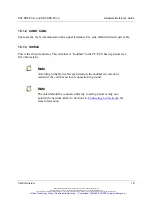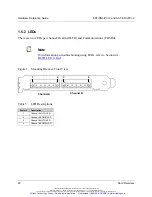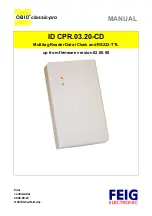
Hardware Reference Guide
SST-DN3-PCI-1 and SST-DN3-PCI-2
26 Installation
©2004 Woodhead Software & Electronics, Division of Woodhead Canada Limited
Document Edition: 1.1, Document #: 715-0083, Template Edition: 1.1, Template #: QMS-06-045
Use, duplication or disclosure of this document or any of the information contained herein is subject to the restrictions on page ii of this document.
2.4 Connecting to a Network
This section is divided into two parts: connecting to a DeviceNet network, and connecting to a
CAN network.
2.4.1 Connecting to a DeviceNet Network
Connect either a DeviceNet Trunk or Drop cable to the 5-pin connector according to the color
code in Section 1.5.1,
CAN Connector
. Make sure that all strands of wire go into the connector,
as bent strands may cause shorts to the adjacent terminal.
Directly connecting DeviceNet thick cable to the card is not recommended due to the mechanical
stress that the cable places on the connector. If you must attach thick cable, secure it to prevent
undue stress.
2.4.1.1 Termination
The card does not have a built-in termination resistor. Each network must have two termination
resistors—one at each end of the trunk. Always refer to the DeviceNet Specification (see Section
D.2,
Reference Documents
) for proper network termination and wiring directions.
2.4.1.2 Power
Refer to
http://www.odva.org/
for basic network guidelines, and to the DeviceNet Specification
for proper powering directions.
2.4.1.3 Grounding
The network shield should be connected directly to earth ground at a single point in the network.
Refer to
http://www.odva.org/
for basic network guidelines, and to the DeviceNet Specification
for proper grounding directions.
Artisan Technology Group - Quality Instrumentation ... Guaranteed | (888) 88-SOURCE | www.artisantg.com
















































